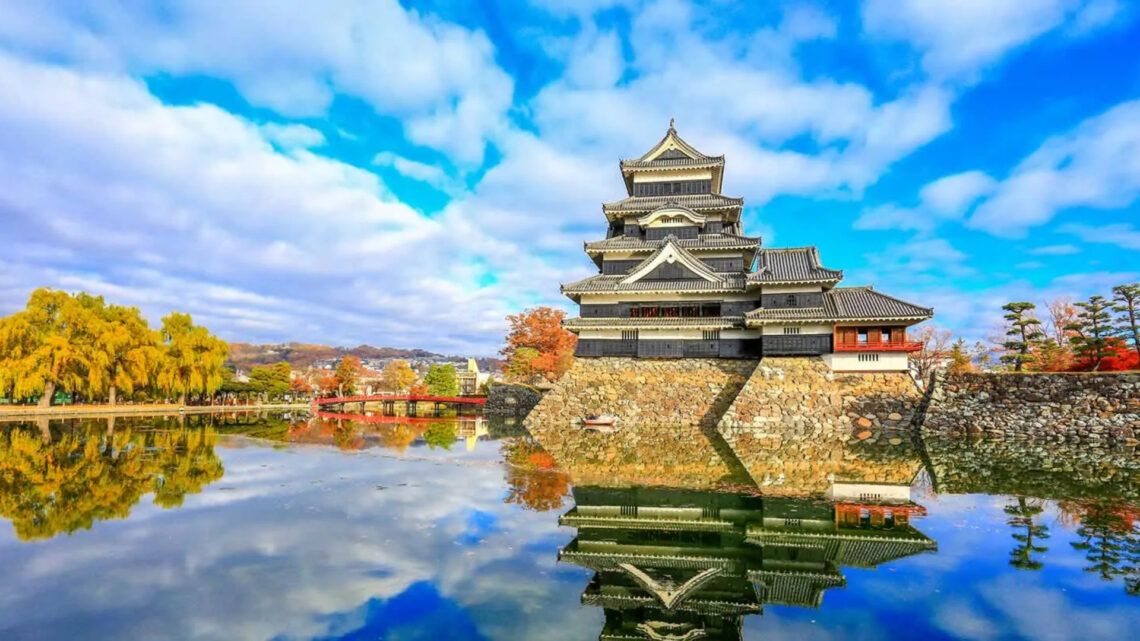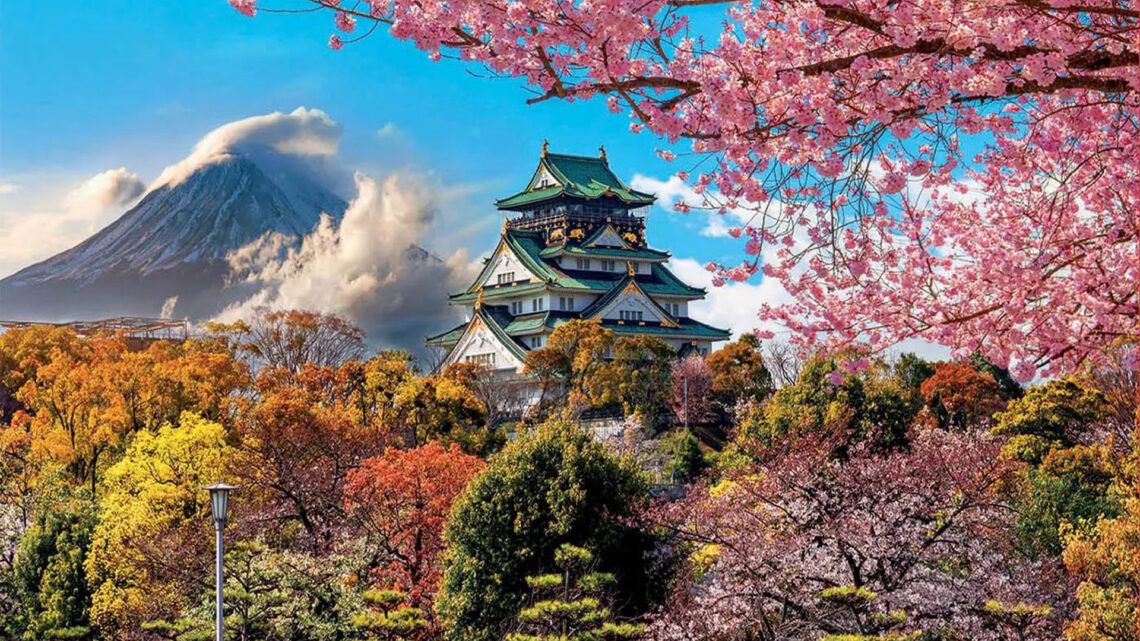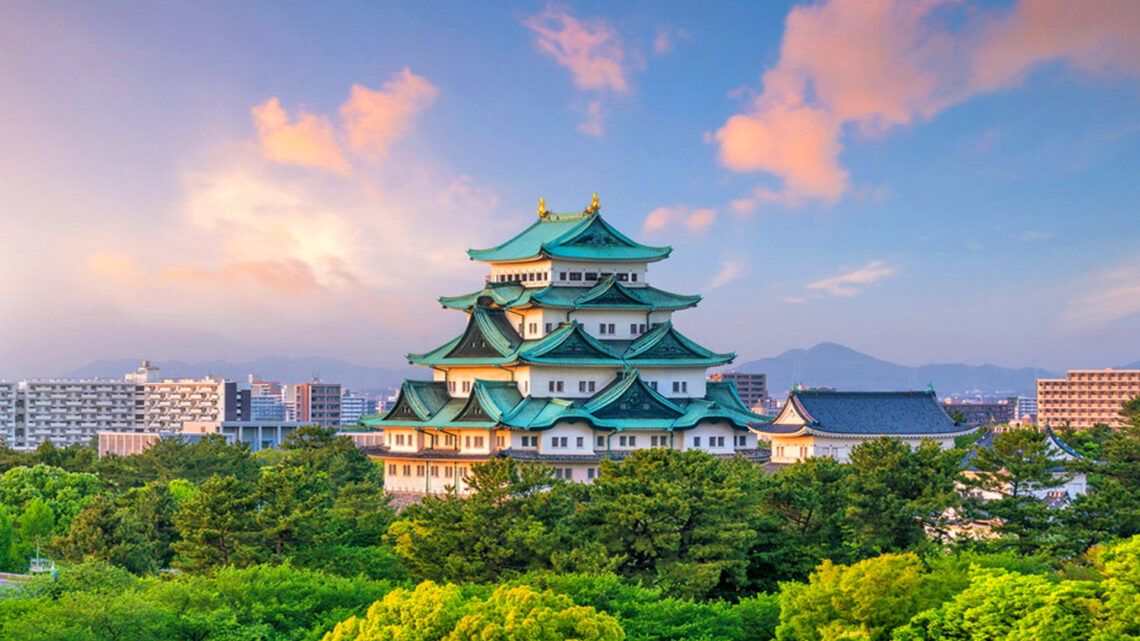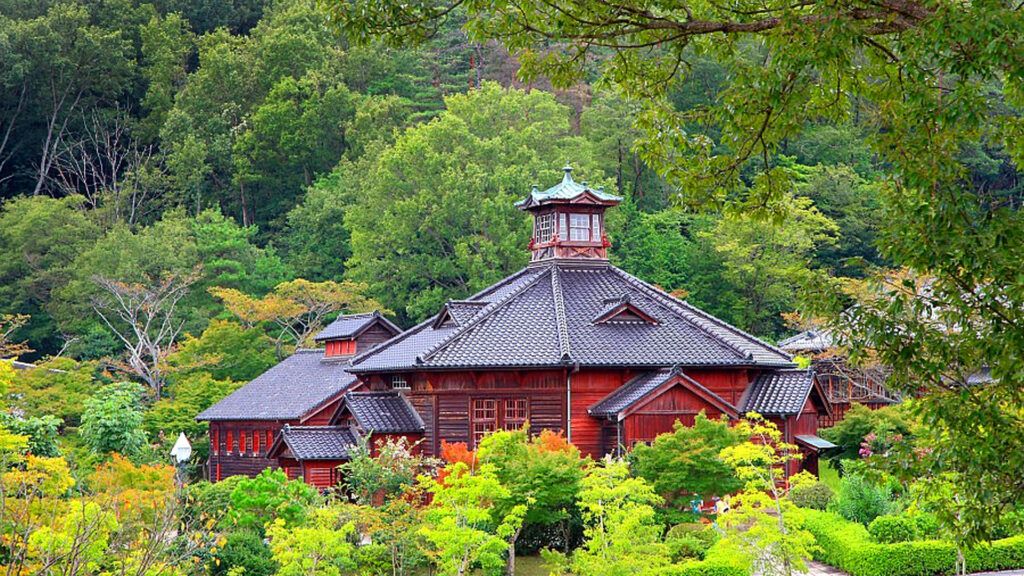
meiji-MURA: A TRAVEL INTO the Meiji era
Today, I would like to take you on a journey into the fascinating world of the Meiji-Mura Open Air Museum, located in the picturesque surroundings of Inuyama, Japan. This unique museum transports us back to the Meiji era, a period that spanned from 1868 to 1912 and is considered one of the pivotal phases in Japanese history.
The Meiji-Mura Open Air Museum houses over 60 faithfully recreated buildings from the Meiji era, relocated from various parts of Japan. The stunning backdrop and meticulous reconstruction make this place a vibrant tribute to an era of change and modernization in Japan.
The magnificent architecture, well-manicured gardens, and authentic atmosphere allow visitors to experience the past up close. One of the museum’s highlights is the splendidly restored Tokyo Station Hotel, faithfully reproduced to showcase its former glory as the face of Tokyo.
The diversity of buildings in the open-air museum is impressive, ranging from traditional tea houses to grand residences, shops, and schools. The collection reflects the daily life of people during the Meiji era.
A stroll through the cobbled streets of Meiji-Mura is like a journey through time, reliving kimonos, traditional craftsmanship, and historical customs. The friendly and knowledgeable museum guides contribute to keeping history alive by sharing interesting anecdotes and background information.
Meiji-Mura also offers numerous interactive activities for visitors of all ages. From kimono tailoring workshops to tea ceremonies and demonstrations of traditional crafts, visitors can actively participate in the cultural heritage.
For photographers, Meiji-Mura is a true paradise. The buildings, gardens, and scenic surroundings provide countless photo opportunities capturing the beauty and elegance of the Meiji era. The changing seasons continually give the museum a new enchanting atmosphere.
After an eventful day at the Meiji-Mura Open Air Museum, visitors have the opportunity to enjoy traditional Japanese cuisine in the surrounding restaurants. From sushi to ramen and tempura-like treats, the gastronomic diversity reflects the culinary splendor of the Meiji era.
In summary, the Meiji-Mura Open Air Museum is a must-visit for history enthusiasts, culture lovers, and anyone looking to embark on a journey back to the Meiji era. The blend of impressive architecture, living history, and interactive experiences makes this place a gem in Japan’s museum landscape. So, dive into the past and let yourself be enchanted by the magic of Meiji-Mura!
The fascinating Surroundings of Meiji-Mura
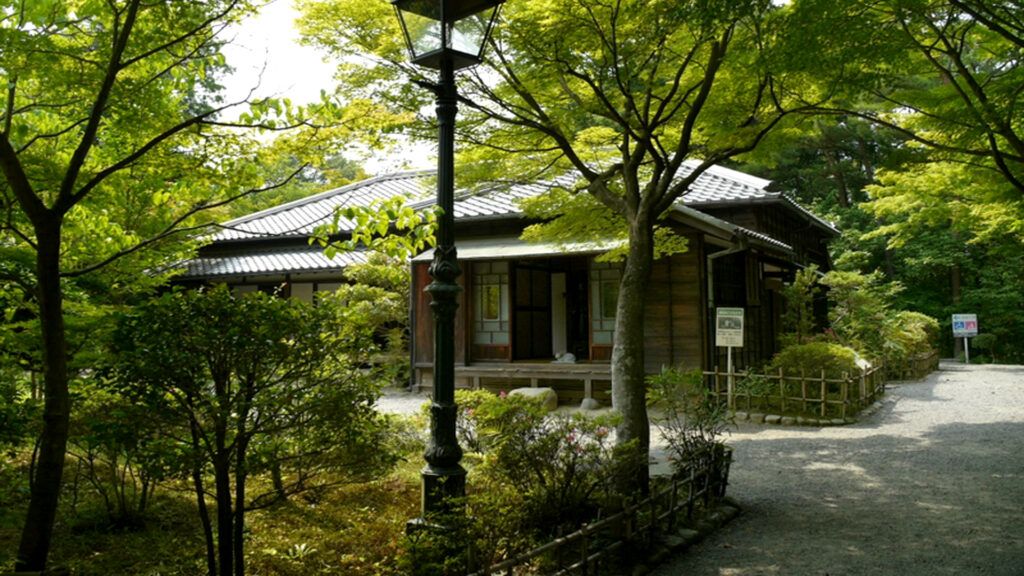
The fascinating architecture of Meiji-Mura provides a captivating glimpse into the Meiji era (1868-1912) in Japan, a period characterized by profound transformation and modernization. To truly appreciate the architecture in Meiji-Mura, it is crucial to understand the historical significance of the Meiji era, which marked Japan’s transition from an isolated feudal society to an open, modern nation. The political, economic, and social changes are vividly reflected in the architecture of that time.
Upon entering the museum, visitors are greeted by an imposing gate—the symbolic entrance to Meiji-Mura. The massive wooden gate adorned with intricate carvings immediately conveys the sense of stepping into another time. It serves not only as an entrance but also as a portal into history, transporting visitors to the world of the Meiji era.
Meiji-Mura impresses not only with its chronological representation but also with the diversity of architectural styles. The museum boasts an impressive collection of buildings from the Meiji era, including residences, shops, schools, and even a replica of the famous Rokumeikan ballroom. The variety reflects the dynamic development of this period.
A fascinating feature of Meiji architecture is the successful fusion of tradition and modernity. This is especially evident in the residences of affluent citizens, which blend traditional Japanese architectural elements with modern Western influences. The roofs with distinctive shapes and the use of wood give the buildings a traditional touch, while large windows, balconies, and verandas introduce a hint of Western elegance.
Meiji-Mura highlights that architecture is not just about large structures; it also emphasizes attention to detail. The intricate decorations, precise design of columns and doors—all these elements attest to a deep respect for craftsmanship. It is the details that make Meiji architecture so unique and captivating.
Another aspect shaping Meiji architecture is its close connection to nature. Many buildings are surrounded by expansive gardens, ponds, and bridges. The harmonious integration of architecture and nature was of great importance during the Meiji era, imparting a special aesthetic to the structures.
Meiji-Mura is not only a museum but also a lesson in architectural history. Visitors have the opportunity to immerse themselves in the past and relive the developments of this fascinating era. It serves as a living testament to Japan’s cultural transformation.
In Meiji-Mura, one experiences not only the architecture of the Meiji era but also the atmosphere and spirit of that time. The magnificent buildings, meticulously maintained gardens, and authentic portrayal of daily life make this place a unique experience for architecture and history enthusiasts.
Meiji-Mura: Craftsmanship and Art
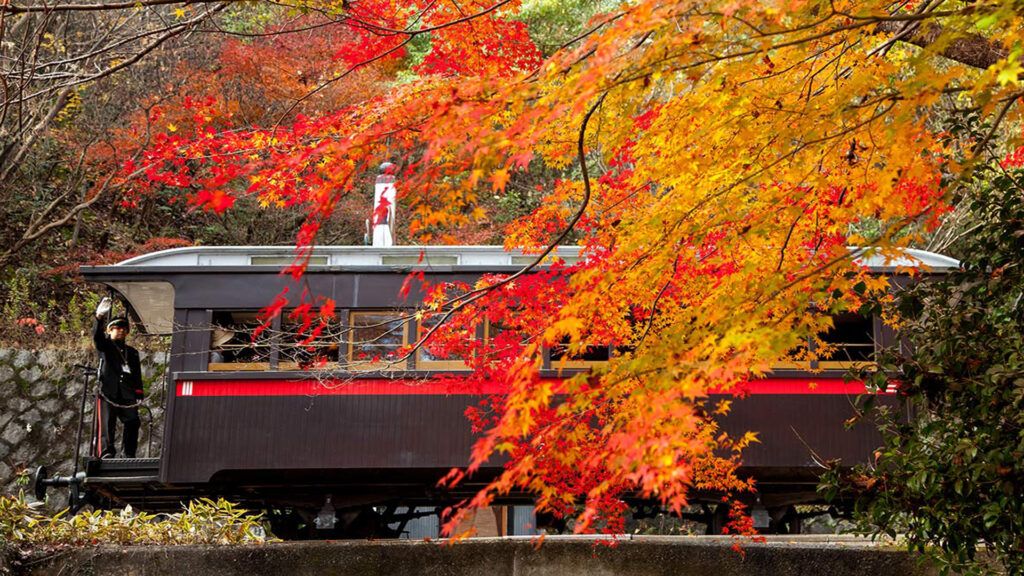
The restoration and reconstruction of buildings in Meiji-Mura itself stand as an impressive testament to Japanese craftsmanship. Skilled artisans with traditional expertise were engaged to meticulously restore the structures using authentic materials with the utmost precision. This process of careful reconstruction not only contributes to the preservation of cultural heritage but also ensures that visitors can immerse themselves in an authentic Meiji atmosphere.
A stroll through Meiji-Mura reveals the diversity of craftsmanship from that era. From intricately crafted woodwork to handwoven textiles, traditional ceramics to hand-forged metalwork – artisans in Meiji-Mura are dedicated to reviving the nuances of these past art forms.
Visitors have the unique opportunity to witness craftsmen in action. In specialized workshops, they showcase their skills and often offer interactive sessions. Here, guests can not only observe but also get hands-on experience, learning techniques passed down through generations.
The Meiji era was a period of transformation, marked by Japan opening its doors to the world and integrating Western influences. This is reflected in the art as well. Meiji-Mura presents an impressive collection of paintings, sculptures, and other artistic works documenting the cultural fusion and evolving identity of Japan during that time.
The meticulous restoration of buildings, the diversity of crafts, and the presentation of artworks make this open-air museum a unique experience for history enthusiasts, art lovers, and those who appreciate Japan’s rich cultural past.
One outstanding craft that continues to thrive in Meiji-Mura is the art of ceramics. The Meiji era was renowned for its intricate ceramic wares, both functional and aesthetically pleasing. In Meiji-Mura’s workshops, visitors can witness skilled craftsmen reviving ancient ceramic-making techniques, creating timeless masterpieces.
Another fascinating craft kept alive in Meiji-Mura is the production of traditional textiles. The art of weaving and dyeing fabrics flourished during the Meiji era, with intricate patterns and vibrant colors reflecting the rich cultural history of that time. In the workshops of Meiji-Mura, visitors are introduced to the world of textile art, experiencing the intricate steps from raw material to finished fabric.
In addition to these traditional crafts, Meiji-Mura showcases a variety of handmade wooden products representing the high craftsmanship of that era. From intricately carved furniture to elaborate wooden decorations, Meiji-Mura’s craftsmen showcase their skills while preserving the cultural heritage of this historical period.
Preserving and promoting traditional craftsmanship in Meiji-Mura is crucial to maintaining a connection to the past and providing future generations with insight into Japan’s rich cultural history. Visiting this historical site is not just a journey into the past but also an acknowledgment of the artistic achievements of the Meiji era.
I highly recommend actively participating in workshops and trying your hand at legendary techniques. This immersive approach allows guests to be not just spectators but active participants in the world of traditional craftsmanship.
Another highlight in Meiji-Mura is the annual craft fair, where artisans from different regions come together to showcase their skills and offer craft enthusiasts the opportunity to acquire unique handmade products. This fair is not only a platform for the exchange of knowledge and experiences but also a vibrant celebration of the diversity and creativity of traditional craftsmanship.
The connection between craftsmanship and nature is unmistakable in Meiji-Mura. The materials used for various crafts often come from the surrounding nature, and craftsmen have a deep appreciation for the resources available to them. This sustainable approach reflects the harmony between humans and nature, which was crucial in the Meiji era.
A particularly impressive example of the connection between craftsmanship and nature in Meiji-Mura is traditional bamboo processing. Bamboo, known for its versatility, was widely used in the Meiji era for various crafts. In the bamboo workshops of Meiji-Mura, visitors can see how this sustainable material is skillfully processed into artistic weaves and intricate structures.
Historical Architecture in Meiji-Mura
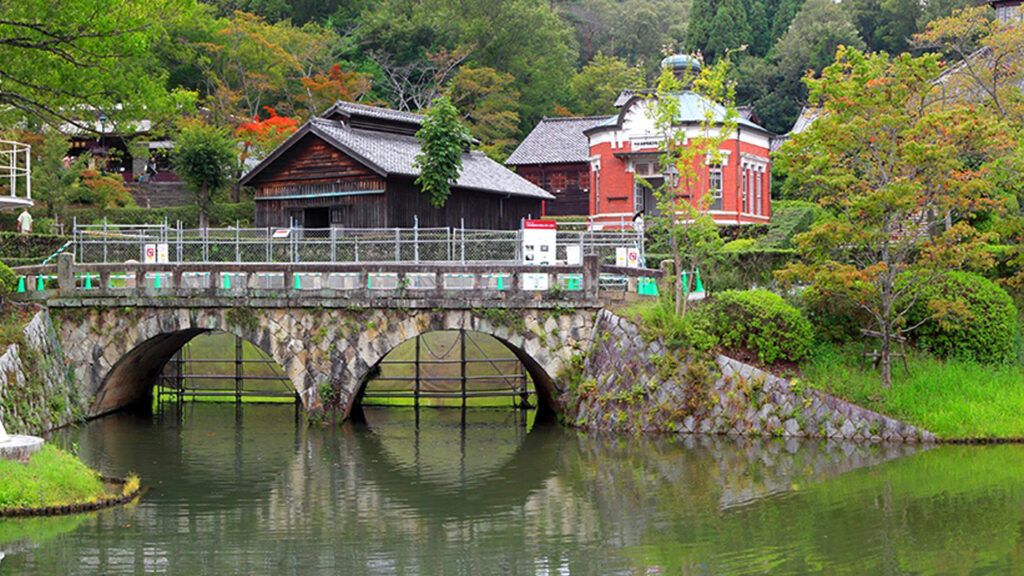
Meiji-Mura is renowned for its historical buildings, but the surrounding area has much more to offer. A definite highlight is the Meiji-Mura Hotel, an impressive Western-style structure reflecting the splendor of bygone days. The interior instantly transports visitors to the early 1900s, and a stroll through the magnificent garden completes the historical experience.
However, it’s not just the historical buildings that make Meiji-Mura a unique destination. The surroundings boast natural beauty, with the Meiji-Mura Park serving as a tranquil green oasis. Picnic spots amidst trees and blooming flowers invite visitors to relax and unwind.
For adventurers, I recommend a hike to the nearby Shomyo Waterfall. The trail winds through dense forests, with the sound of trickling water accompanying you to the impressive destination. It’s a perfect place to fully enjoy nature and escape from daily life.
This breathtaking area, rich in history and natural beauty, has a multitude of spectacular surprises for explorers and nature enthusiasts alike. Let’s delve together into the wonders of nature seamlessly interwoven with the region’s history.
Let’s start our journey with a gaze at the majestic Mount Fuji, proudly standing on the horizon. This impressive mountain is not only a prominent symbol of Japan but also a true natural wonder. Its snow-capped peak rises majestically into the sky, providing an unforgettable backdrop for the surrounding landscape. The unique atmosphere created by Mount Fuji gives Meiji-Mura a special aura.
Not far from Meiji-Mura, adventure seekers can discover the enchanting Shomyo Waterfalls. These stunning cascades descend amid lush green forests, creating an idyllic setting. Walking along the trails allows visitors to feel the pure freshness of the water and savor the soothing sounds of the flowing stream. This place is not just a visual feast but also a source of rejuvenation for the body and soul.
A few kilometers from Meiji-Mura stretches the fascinating Aokigahara Forest, also known as the “Suicide Forest.” Despite its somber reputation, this place holds a mysterious beauty. The dense tree cover, moss-covered stones, and the subdued light filtering through the leaves create a unique atmosphere. The Aokigahara Forest is not only a hiking destination but also a source of stories and myths revolving around its mystical aura.
In the immediate vicinity of Meiji-Mura, the hidden oases of Shiraito await. These sparkling waterfalls are visually impressive and a soothing source of relaxation. The clear water gently flows over the rocks, creating a captivating spectacle. The surrounding nature, with lush greenery and singing birds, forms a haven of peace and tranquility.
Meiji-Mura shines especially in spring, adorned with a plethora of blossoms that enchant every observer. Cherry blossom trees in full bloom transform the landscape into a colorful fairy tale. The delicate petals dance in the wind, covering the ground in a carpet of pink and white. A stroll through this blooming splendor is like a dream come true, making visitors’ hearts flutter with joy.
Exploring the Culinary Side of Meiji-Mura
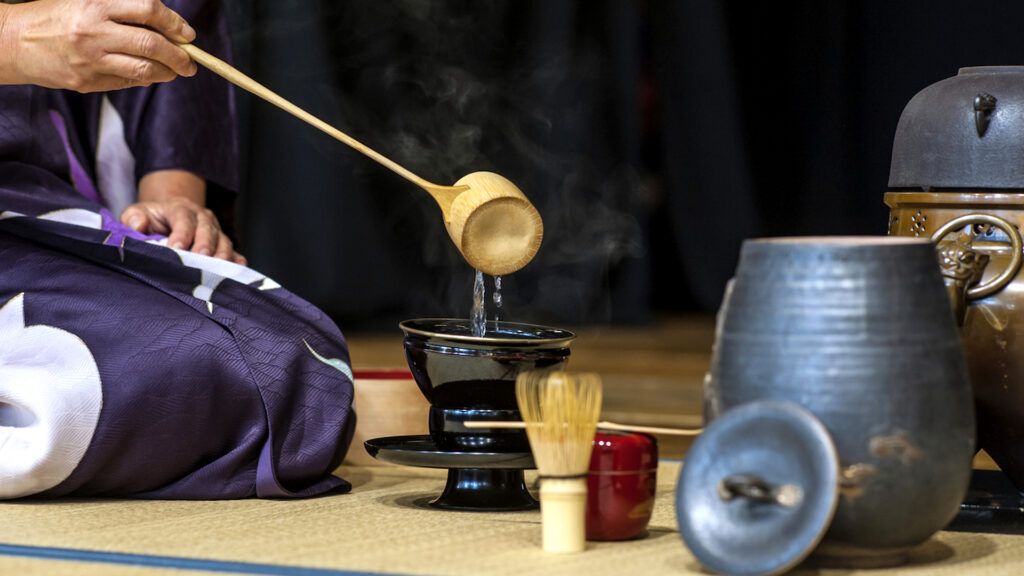
After an enriching tour through history and nature, it’s time for a culinary exploration. In the charming villages around Meiji-Mura, you’ll find traditional restaurants serving local specialties. Be sure to try the famous Hida beef or savor fresh seafood from the region. The restaurants exude a cozy atmosphere, allowing you to feel the hospitality of the locals.
Meiji-Mura offers not only impressive architectural wonders but also a wealth of culinary treasures. Here, the traditional cuisine of the Meiji era merges with modern influences to create a unique culinary experience. Let’s traverse the various culinary stops that this historic city has to offer together.
Let’s begin our journey with a cup of exquisite Japanese green tea. The gentle hills of Meiji-Mura house some of the country’s best tea plantations, where tea is still cultivated and harvested using traditional methods. During a tasting, you can experience the fine taste and aroma of this refined beverage that has played a central role in Japanese culture for centuries.
Dive into the world of seafood with Meiji-era sushi creations. In authentic restaurants, you’ll find delicious variations of Nigiri, Sashimi, and Maki inspired by the old techniques of sushi masters. Fresh, high-quality ingredients and the art of presentation make these dishes a true feast for the senses.
Meiji-Mura takes the crispiness and flavor of tempura traditions to new heights. In the charming street-side eateries, you can watch chefs dip fresh seafood and vegetables into an airy batter before your eyes. The crispy delight, accompanied by a special tempura sauce, gives this dish an unparalleled depth of flavor.
For those seeking a refined culinary experience, Meiji-Mura’s Kaiseki art is a must-try. This multi-course meal, carefully prepared and artistically presented, offers an explosion of flavors and textures. From soups to sashimi to grilled items, Kaiseki art brings together the essence of the Meiji era in a delicate menu.
As you stroll through the cobbled streets of Meiji-Mura, discover charming food stalls telling the story of the Meiji era in every bite. Try grilled yakitori skewers, steaming gyoza, and other traditional treats inspired by the streets of Japan. This experience blends the pulse of modernity with the flavors of the past.
Meiji-Mura is not just a journey into the past but also a culinary expedition through Japan’s rich history. From traditional teas to modern interpretations of street food, this city offers a true treasure trove of culinary delights. Immerse yourself, taste, and experience the Meiji era in a way that will enchant your senses. Your culinary discovery in Meiji-Mura begins here.
My Conclusion: A Visit to Meiji-Mura
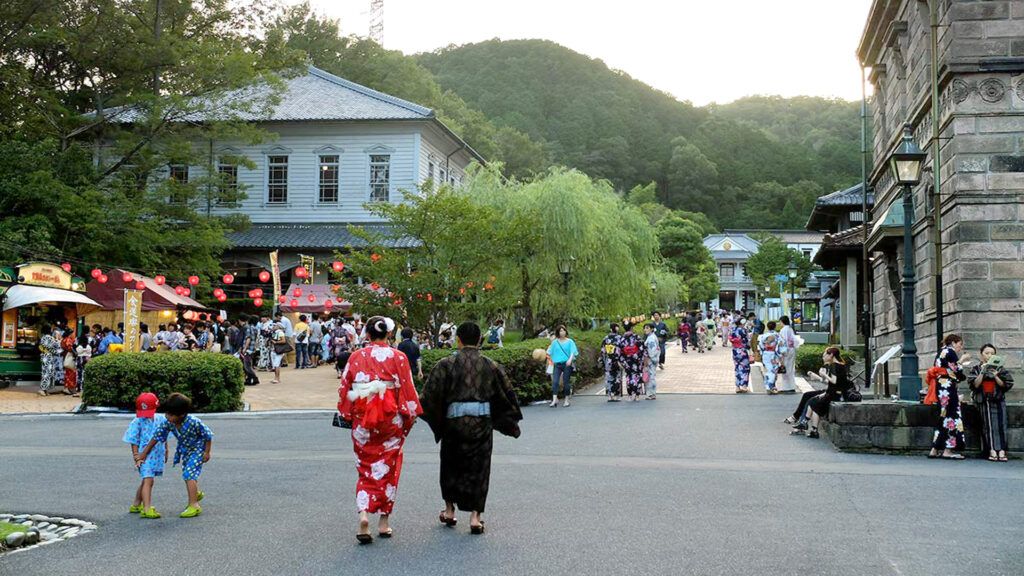
Japan is a country renowned for its rich cultural history, and one place that beautifully preserves this history is Meiji-Mura. A visit to this captivating open-air museum not only provides insight into the Meiji era but also takes visitors on a journey through the architecture, art, and daily life of this significant period in Japanese history.
The open-air museum sprawls across a picturesque landscape that mirrors the rural beauty of Japan. Nestled among gentle hills and surrounded by lush nature, Meiji-Mura offers a backdrop that transports visitors back in time. The meticulous reconstruction of historical buildings from the Meiji era lends the museum an authentic charm, breathing life into the atmosphere of that time.
A stroll through Meiji-Mura is akin to an architectural time travel experience. The magnificent structures, ranging from majestic temples to traditional homes of that era, bear witness to the craftsmanship and artistic richness of the period. Every detail has been carefully reconstructed to preserve the authenticity and brilliance of the Meiji era.
However, Meiji-Mura is more than just a collection of historical buildings. Hidden within exhibition spaces and museums are treasures from the past, including artworks, artifacts, and personal items that offer a glimpse into the daily lives of people during the Meiji era. These cultural treasures narrate stories of upheaval, change, and tradition that remain relevant and fascinating even today.
Meiji-Mura is not just a place for history enthusiasts but also for families seeking an entertaining and educational experience. Interactive activities, guided tours, and demonstrations provide an opportunity to experience the past in a playful manner. Children can learn practical skills, while adults can delve into the deeper layers of the Meiji era.
A visit to Meiji-Mura is like a time-traveling experience that brings the fascination of the Meiji era to life. The careful reconstruction of architectural masterpieces, the diversity of cultural treasures, and the interactive activities make this place a must-visit for anyone wanting to experience the history of Japan in a unique way. Immerse yourself in the past and let the beauty and significance of the Meiji era enchant you.
Sincerely,
Hermann Candahashi

